
Pediatric Quality & Safety
Scope & Guideline
Fostering collaboration for better pediatric outcomes.
Introduction
Aims and Scopes
- Quality Improvement Methodologies:
The journal emphasizes the application of various quality improvement methodologies across different pediatric care settings to enhance patient safety and healthcare delivery. - Patient Safety Initiatives:
Research often centers on initiatives aimed at reducing medical errors and improving safety protocols in pediatric care environments. - Interprofessional Collaboration:
The journal promotes teamwork among healthcare professionals, highlighting studies that enhance collaboration between nurses, physicians, and other healthcare providers to improve patient outcomes. - Data-Driven Outcomes:
Papers frequently utilize data analytics to assess the effectiveness of interventions, showcasing the importance of measurable outcomes in pediatric healthcare. - Focus on Vulnerable Populations:
Research often addresses the needs of vulnerable pediatric populations, including those with chronic conditions, disabilities, or from diverse cultural backgrounds. - Innovative Care Strategies:
The journal highlights innovative approaches in pediatric care, including telehealth, virtual learning, and novel clinical pathways that improve access and quality of services.
Trending and Emerging
- Telemedicine and Virtual Care:
Recent publications highlight the growing importance of telemedicine, especially in the context of the COVID-19 pandemic, illustrating how virtual care can improve access and patient management. - Health Equity and Social Determinants of Health:
There is a noticeable increase in research addressing health equity, focusing on social determinants of health and how they impact pediatric populations, particularly during and post-pandemic. - Mental Health Integration in Pediatric Care:
Emerging themes include the integration of mental health assessments into routine pediatric care, recognizing the critical role of emotional and psychological well-being in children's health. - Sustainability in Pediatric Care:
A growing focus on sustainability practices in healthcare is evident, with initiatives aimed at reducing environmental impact and promoting sustainable practices in pediatric settings. - Enhanced Patient and Family Engagement:
Research is increasingly emphasizing the importance of patient and family engagement in care processes, highlighting strategies to improve communication and involvement in decision-making.
Declining or Waning
- Traditional Clinical Practices:
There is a noticeable decline in papers focusing strictly on traditional clinical practices without a quality improvement component, as the field shifts towards more integrated and innovative approaches. - Single-Disciplinary Research:
The focus on single-disciplinary studies is waning, with a shift towards interdisciplinary research that incorporates insights from various healthcare fields to enhance pediatric care. - Reactive Care Models:
Research centered on reactive care models is declining, as the emphasis increasingly moves towards proactive and preventive strategies in pediatric healthcare.
Similar Journals
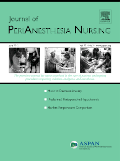
Journal of PeriAnesthesia Nursing
Fostering Knowledge and Practice in PeriAnesthesiaThe Journal of PeriAnesthesia Nursing is a premier publication dedicated to advancing the field of perioperative and postoperative nursing practices. Published by ELSEVIER SCIENCE INC and headquartered in the United States, this journal boasts an impressive ranking as Q1 in Medical and Surgical Nursing, reflecting its significant contribution to the discipline. With its ISSN 1089-9472 and E-ISSN 1532-8473, the journal has established itself as a vital resource for nurses, researchers, and healthcare professionals seeking to enhance patient care across various stages of anesthesia. Covering a broad scope of topics from clinical practices to innovative research, the journal is indexed in Scopus, ranking 5th out of 26 in its category, placing it in the 82nd percentile among its peers. Researchers and practitioners are encouraged to engage with the latest findings and evidence-based practices that are published biannually, ensuring they stay at the forefront of this essential healthcare field.
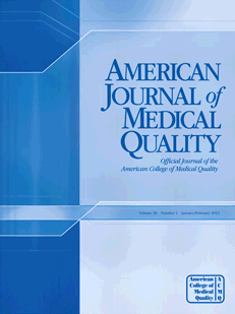
AMERICAN JOURNAL OF MEDICAL QUALITY
Elevating Healthcare Standards through Evidence-Based InsightsAmerican Journal of Medical Quality is a pivotal publication in the field of healthcare quality and medical policy, published by Lippincott Williams & Wilkins. Since its inception in 1992, the journal has become a critical resource for researchers, practitioners, and students dedicated to improving patient care and health systems through evidence-based practices. With a current impact factor that reflects its significance in the arena of medicine and health policy, the journal falls within the Q3 category in both Health Policy and Medicine (Miscellaneous) as of 2023, ranking 253rd out of 636 in general medicine according to Scopus metrics. This underscores its relevance and prominence among peers. The journal's scope encompasses a diverse range of topics related to quality improvement initiatives, healthcare delivery systems, and policy analysis, making it an essential read for anyone invested in advancing medical quality standards and practices. While it is not an open-access journal, the content is meticulously curated to enrich the academic discourse and inform best practices in medical quality. With an ongoing commitment to addressing contemporary challenges in healthcare, American Journal of Medical Quality serves as an influential platform for advancing the knowledge and implementation of quality initiatives in medical settings.

Journal of Healthcare Quality Research
Shaping health policy with rigorous analysis.Journal of Healthcare Quality Research is an esteemed publication dedicated to advancing the field of health policy through rigorous research and comprehensive analysis. Published by ELSEVIER ESPANA SLU, this journal serves as a vital platform for researchers, professionals, and academics striving to address critical issues affecting healthcare quality across the globe. As a Q3 ranked journal in health policy for 2023, it holds a significant position within the Scopus rankings, showcasing its role in shaping healthcare discussions and policies. The E-ISSN: 2603-6479 reflects its commitment to wide accessibility, with an objective to provide insightful contributions that bridge gaps between theory and practice. With an impressive scope that spans from 2018 to 2024, the journal not only disseminates high-quality research but also fosters collaboration among policymakers and healthcare providers, driving innovations that enhance patient care and health systems worldwide.

Risk Management and Healthcare Policy
Connecting research and practice to enhance global health outcomes.Risk Management and Healthcare Policy is an esteemed Open Access journal published by DOVE MEDICAL PRESS LTD, dedicated to advancing the fields of health policy and public health. Established in 2008, the journal fosters a rich dialogue among researchers, professionals, and students, focusing on innovative strategies for managing risks within healthcare systems. With a current impact factor reflected in its robust Scopus rankings—placing it in the top quartile (Q2) in both Health Policy and Public Health, Environmental and Occupational Health—the journal is a pivotal resource that shares critical insights and evidence-based practices. The journal not only covers empirical studies and analytical research but also promotes discussions on emerging challenges and opportunities within the healthcare sector. As a result, Risk Management and Healthcare Policy serves as a vital platform for disseminating high-quality research, fostering collaboration, and informing policy decisions aimed at enhancing health outcomes globally.
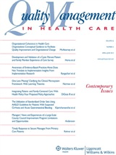
Quality Management in Health Care
Transforming healthcare through excellence in management.Quality Management in Health Care is a revered peer-reviewed journal published by Lippincott Williams & Wilkins, dedicated to advancing the understanding and implementation of quality management principles within the healthcare sector. With an ISSN of 1063-8628 and E-ISSN 1550-5154, this journal has established its reputation through the dissemination of rigorous research and innovative practices that address critical issues in care planning, health policy, and leadership management. The journal is ranked in the Q3 quartile across multiple categories, including Care Planning and Health Policy, demonstrating its significance in the evolving landscape of health management. Although it does not currently offer Open Access options, its blend of theoretical and practical insights makes it an essential resource for researchers, healthcare professionals, and students keen on enhancing quality and effectiveness in health services. This journal continues to play a vital role in shaping best practices and fostering a culture of quality excellence in healthcare, aligning with its objective to refine organizational practices and improve patient outcomes.
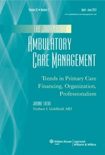
JOURNAL OF AMBULATORY CARE MANAGEMENT
Catalyzing change in health policy through rigorous research.JOURNAL OF AMBULATORY CARE MANAGEMENT, published by Lippincott Williams & Wilkins, is a leading peer-reviewed journal dedicated to advancing research and practice in the field of health policy, with a specific focus on ambulatory care management. Since its inception in 1978, this journal has served as a critical platform for disseminating innovative studies, insights, and methodologies that inform policy makers, healthcare professionals, and academic researchers alike. By maintaining an impressive ranking within the Q3 category in Health Policy and a Scopus rank of 148 out of 310, it underscores the journal's growing influence in shaping health policy discussions and decisions. The journal operates on a traditional subscription model, ensuring a high-quality review process while remaining accessible to those wishing to subscribe. With an ongoing commitment to excellence, the JOURNAL OF AMBULATORY CARE MANAGEMENT is essential for anyone involved in improving outcomes in ambulatory care settings and influencing health policy reforms, making it a must-read for researchers, practitioners, and students aiming to stay at the forefront of healthcare innovation.
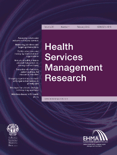
Health Services Management Research
Elevating Health Policy Research for a Better TomorrowHealth Services Management Research is a premier academic journal published by SAGE PUBLICATIONS LTD, focusing on critical areas within the health policy domain. With an ISSN of 0951-4848 and E-ISSN 1758-1044, this UK-based journal has been a valuable resource for over three decades, converging from 1988 to 2024. Recognized for its contribution to the field, it holds a commendable Q2 quartile ranking, positioning it in the top 35% of journals in Health Policy, reflecting its significant impact within the academic community, as evidenced by its rank of 109 out of 310 in Scopus rankings, placing it in the 65th percentile. The journal aims to foster innovative research that addresses the complexities of health services management, making it an indispensable resource for researchers, professionals, and students dedicated to improving health systems. Although it currently does not offer Open Access, the journal remains committed to advancing knowledge and practice in health policy management through rigorous peer-reviewed articles, case studies, and evidence-based analyses.
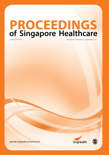
Proceedings of Singapore Healthcare
Advancing Healthcare Knowledge for TomorrowProceedings of Singapore Healthcare is a distinguished journal published by SAGE Publications Inc, focusing on the diverse and rapidly evolving field of healthcare. Since its inception in 2010, this Open Access journal has been committed to facilitating the dissemination of high-quality research and innovative practices that contribute to the advancement of healthcare in Singapore and beyond. With its ISSN of 2010-1058 and E-ISSN of 2059-2329, the journal has carved a niche for itself, achieving a rank #364/636 in the Scopus database within the General Medicine category, placing it in the 42nd percentile. The journal operates under a Q4 category in the 2023 Medicine (miscellaneous) ranking, making it a platform for emerging voices in healthcare research. By publishing original research articles, reviews, and case studies, it aims to bridge the gap between research and clinical practice, rendering it an essential resource for researchers, healthcare professionals, and students eager to stay informed about the latest developments in the field.
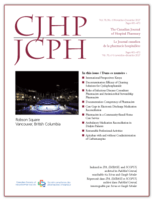
CANADIAN JOURNAL OF HOSPITAL PHARMACY
Transforming Pharmacy Practice with Cutting-Edge InsightsCanadian Journal of Hospital Pharmacy, published by the Canadian Society of Hospital Pharmacists, stands as a pivotal resource within the field of pharmacy and medical pharmacology since its inception in 1973. With its ISSN 0008-4123, this peer-reviewed journal aims to advance the knowledge and practice of hospital pharmacy through the dissemination of high-quality research, reviews, and case studies. Although currently not an open-access journal, it boasts a respectable influence in the academic community, reflected in its Q3 quartile rankings in both pharmacology and pharmacy as of 2023. Located in Ottawa, Canada, the journal encourages contributions that emphasize evidence-based practices and innovative solutions to enhance patient care. By fostering a dialogue among pharmacists, researchers, and healthcare professionals, the Canadian Journal of Hospital Pharmacy continues to be an essential platform for addressing contemporary issues and advancements in the hospital pharmacy landscape.
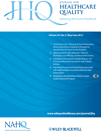
Journal for Healthcare Quality
Transforming health policy with critical insights.Journal for Healthcare Quality, published by Lippincott Williams & Wilkins, serves as a vital platform for disseminating innovative research and insights in the fields of health policy, public health, and medicine. With an ISSN of 1062-2551 and an E-ISSN of 1945-1474, this esteemed journal has been contributing to the improvement of healthcare practices since its inception in 1992. Positioned in the Q3 quartile across its relevant categories as of 2023, it addresses critical issues affecting healthcare quality and policy, demonstrating its commitment to advancing the field. Although it does not currently offer open access, the journal provides researchers and practitioners with an invaluable resource for enhancing their knowledge and practice through peer-reviewed articles aimed at an audience dedicated to improving health outcomes. Located in Philadelphia, the journal continually strives to bridge the gap between research and practical application, making it a cornerstone for those looking to impact healthcare quality.